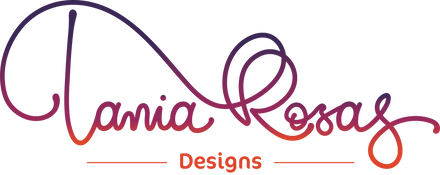How to animate a flying dragon
Hello my friend and welcome to another animation tutorial. I recently created a hand-drawn animation of a cute dragon for the Lunar New Year in this video I will show you my process so that you can create and animate your own little dragon.
In this video, I will show you:
- How to setup your file in Adobe Fresco
- Talk about my research and inspiration for the dragon design
- How I sketched and animated the dragon
- And finally how I chose my colour scheme and added those crisp lines.
Here is what I used to create this cute dragon flying and breathing a cloud:
- I used my Apple IPad Pro 11 inch (2nd generation) to make this dragon animation. This is no longer sold but you can get the latest version here.
- The software I used is Adobe Fresco, I use it via my Adobe subscription but they have a free version too.
- To finalised the animation video, I added sound effects which I got from Envato Elements in Adobe Premiere Pro. You can use any free video editing software like Adobe Rush for this step.
In this video, I am referencing to the 12 principles of animation. You can either read the book The Illusion of Life: Disney Animation by the OGs Frank Thomas and Ollie Johnston that coined these terms or watch this amazing Youtube video that summarises them all.
File Setup
I created this animation in Adobe Fresco, however, the principles I will show you here, they can be used in any other software I created a file in the size is 1920 x 1080, which is essentially a full HD. And I knew that this was the format I wanted my final video to look like. So choose whatever fits for you.
Then I added a new empty layer separate from the background and activated the animation tool.
Inspiration & Research
My first step was to choose my inspiration for the Dragon. So I did a bit of research on dragons and I remember that I had this picture of a cool statue that I saw when traveling in Vietnam. I used this for my main source of inspiration and started retracing it to get familiarized with the lines of this cool looking dragon.

Since this was for the Lunar New Year. It was important for me to understand the differences between Asian and Western Dragons. There's, of course, differences also within Asia, but at high level they have:
- A serpent look
- whiskers
- horns
- but don't have large wings
- they are a symbol of good fortune
- and are associated with water
This is why they do not breathe fire like Western dragons.
Sketching and Animating the Dragon
When I began animating the dragon, I quickly realized that my initial inspiration, a detailed statue, was far too complex. So, I simplified the design, opting for a cartoonish look with vibrant colours that not only suited my personal style but also conveyed a joyful, celebratory feel. This exercise in simplification proved incredibly useful, as it helped me identify the essential aspects of the dragon's form.
I started sketching the dragon's head along a wavy trajectory (or arcs like the animation principle!), a crucial step for setting the character's movement. It's vital to isolate each element onto separate layers; this makes the animation process much less overwhelming. The head dictates the rest of the body's motion, so I focused primarily on its position and the flow of the dragon's pointy hair. By duplicating the head into new frames and using the transform tool, I subtly moved and rotated it along the path. The hair, mimicking horns, was animated to interact with the wind, demonstrating the principle of squash and stretch to give the illusion of speed. As the dragon flies faster, the hair stretches back, then follows through when the motion changes, even acting as an anticipation for the next movement.
Knowing I wanted to incorporate text, I decided my dragon needed to breathe out something, even if not fire. So, I added a cloud, creating a wavy connection to the dragon's mouth to show it was being exhaled. I initially used a trajectory (arcs) to help align the head, which eventually led me to separate the head from the body for better realignment. This reinforces my key takeaway: isolating elements on different layers is the most important thing. You should animate each element completely, frame by frame, before moving to the next. I recommend starting with the head, then the basic body outline, followed by body details and the tail. Next, animate the front foot and back foot (on their own layers, as their movements might differ), and finally, the cloud.
As you animate, feel free to adjust the animation settings, like frames per second, to achieve your desired speed. Crucially, ensure all your layers have the same number of frames so your animation remains aligned and doesn't loop incorrectly. The sketch you've created is your blueprint, and once it's done, you've completed the heavy lifting; now you just need to follow it through!
Crisp Lines and Colour
Choosing Your Colour Scheme
Now is the time for the crisp lines and colour. As for my colour scheme, red and gold are the most representative colours of the Lunar New Year. So I went with red and a kind of a yellowish. In Chinese culture, red represents prosperity and gold represents fortune. These are warm tones. So to balance the image, I used a cool blue tone for the background. Unintentionally, the dragon started to look like Mushu from Mulan. I wonder if Disney thought similarly when selecting their colours.
Applying Outlines and Fill
Now we want to add crisp lines and the colour. I focus first on the outlines. I was using the vector brush, which means I can easily later use the bucket tool to fill in the shapes. At that point I wasn't sure if I wanted the fill colour and outlines to be the same or different. In the end, I made the fill colour a little bit lighter for a more cartoonish look. I created as many layers as colours that I used. So one layer for the outlines and one for to fill colour. This was the case for the dragon, eyes of the dragon, along with a nose detail and the cloud. After watching the animation I added. I liked to add a bit more movement and complexity to the dragon as it was blowing out air.
Finalizing the Animation
Once the Dragon and Cloud animation were finished, I added music and effects on Adobe Premiere Pro to finalize the video. I use Envato Elements for all of my sound effects, video footage, etc.
I hope this short tutorial was useful for you to get started with cute animations on Adobe Fresco or the software of your choice. And here's the final Dragon animation Enjoy!
Want to use this animation in your own projects? The finished animation of the flying dragon is available for licensing! Visit my licensing page!


